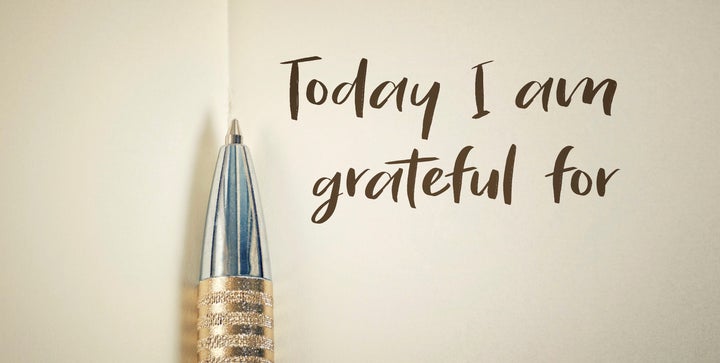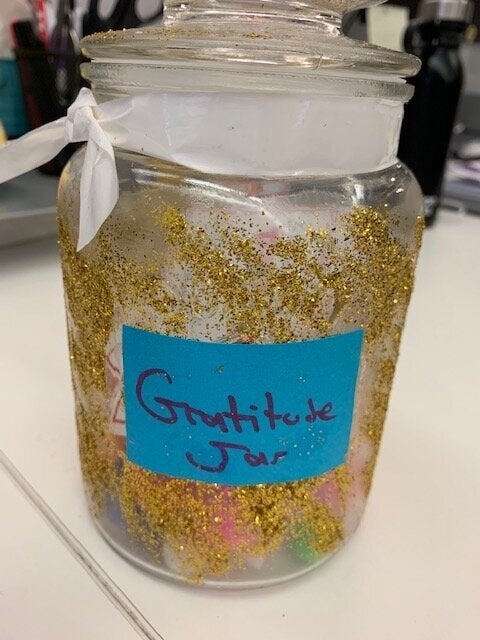
Welcome to HuffPost Canada’s (almost) daily guide to helping you pick up an easy, everyday ritual that can make your life a bit better, in a small but significant way.
Canadians are stressed out, anxious, and are feeling disconnected from each other. Every Monday through Friday, we’ll share a tiny tip to help you feel good. We’ve got your back.
Today’s Habit: Make a gratitude jar.
For whenever you’re feeling: Like you don’t have anything good going on in your life.
What it is: It can be really easy to only see the negative in your life. Maybe you’re unhappy with your job; maybe your relationships haven’t been working out as you’ve hoped; maybe you’re just having one of those days.
Trust us, Tiny Habits readers, we’ve been there, too. Some days we feel like nothing is going right, which makes us spiral with negative self-talk. And while it’s OK to feel not OK, if you find yourself constantly in a negative space, sometimes you need to take a step back and see the positives you have going on in your life.
However, if you think your issues may be deeper rooted than a gratitude jar can fix, it may be time to seek out professional help.
More daily tips! Story continues below slideshow.
But, if you think you need a reminder that there are things to be grateful for, a gratitude jar can be a good place to start. In a nutshell, a gratitude jar is exactly what it sounds like: an empty jar that you fill with slips of paper onto which you’ve written down what you’re grateful for.
How it can help: We’re going to get real with you, Tiny Habits readers: We have a gratitude jar. It’s decorated with gold sparkles, a white ribbon, a rainbow sticker, and a blue piece of paper with “Gratitude Jar” written on it. It’s filled with colourful mini pom poms. It looks like it was made by a three-year-old.
But, we use it.

Here’s how it works: Find a jar or container that’s lying around your home (or if you want to get fancy, buy a Mason jar), cut up strips of paper, write down the things you’re grateful for, and watch your jar fill up.
You can write as many gratitudes as you want, whenever you want, whether it be once a day, once a week, or just whenever you’re feeling particularly grateful.
They don’t even have to be “important” things like family, or your children.
For example, some of the gratitudes in our jar include:
- Pumpkin pie
- A quiet place to poop
- Tim Horton’s Iced Capp
- Daycare
Having gratitude has been scientifically proven to be beneficial for your physical and mental health.
A 2013 study published in Personality and Individual Differences found that grateful people are generally healthier. They are more physically active and more likely to seek medical help should they need it than people who don’t experience gratitude.
Robert Emmons, the world’s leading scientific expert on gratitude, has conducted multiple studies that confirm gratitude reduces stress, toxic emotions, and depression, and can increase happiness.
“Gratitude allows us to celebrate the present. It magnifies positive emotions,” Emmons wrote in Greater Good Magazine. “Gratitude makes us appreciate the value of something, and when we appreciate the value of something, we extract more benefits from it; we’re less likely to take it for granted.
“In effect, I think gratitude allows us to participate more in life,” he continued.
He and a team of researchers have also found that gratitude can make people more compassionate, more forgiving, and more outgoing.

Gratitude can also play a role in overcoming trauma. A 2006 study published in Behavior Research and Therapy found that Vietnam War veterans who had high levels of gratitude had lower rates of post-traumatic stress disorder (PTSD).
Personally, we find that having a gratitude jar makes us take stock of our lives, and makes us realize that we do have so many things to be grateful for.
Where you can do it: Keep a jar on your desk at work, on your bedside table, or leave one on the dining room table so the whole family can contribute.
How it makes us feel: Honestly, when we read our gratitudes we actually feel happier and incredibly fortunate, especially on bad days.
Read more:
And that’s your tip of the day.
Also on HuffPost:
